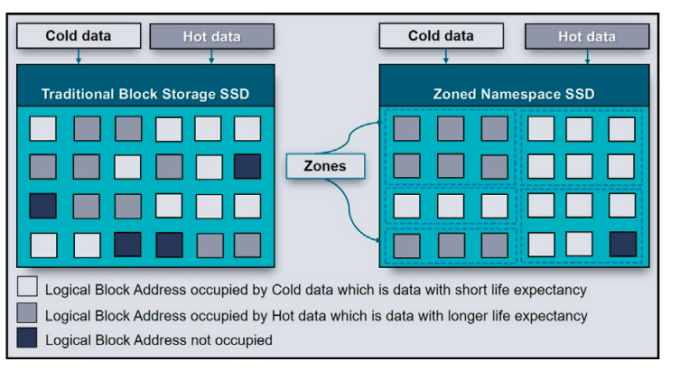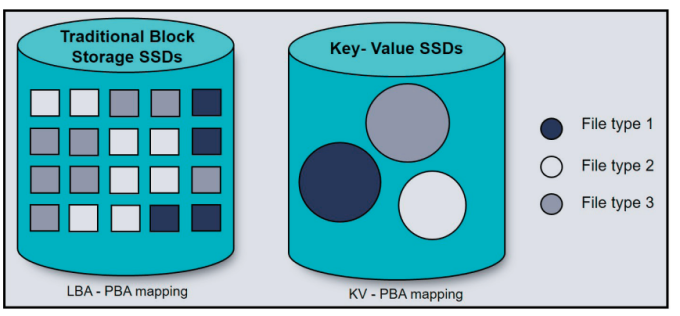Verifying the new namespace storage options in NVMe 2.0
The NVMe 2.0 specification has introduced two new namespace options intended to improve the performance of solid-state storage across different use cases from the enterprise to the consumer’s storage of music and video data.
Their implementation can be complex. The specification allows for the namespaces to be used in isolation or in combination with traditional block storage techniques for SSDs. The trickiest uses can require broad reconfiguration of the memory ecosystem including the operating system, applications and the file system.
However, the namespaces are valuable because they can, for example, make garbage collection and erase processes more efficient, thus ensuring that high performance is maintained while each SSD is used to the maximum number of read-write cycles available.
Zoned namespaces (ZNS) use an optimized sequential write technique that is well suited to the use of SSDs in enterprises and large data centers (Figure 1).
Key-value namespaces (KVS) attach keys to data blocks that when triggered allow erasure of an entire area most efficiently containing unstructured data such as music, photos or .zip files (Figure 2).
Effective verification of the use of these namespaces requires tasks such as simulation and stress testing and metrics collection. A new white paper, ‘Unblocking the full potential of SSDs using zoned and key value namespaces’, describes how this can be achieved using Questa verification IP (QVIP) for the NVMe standard.
It explores the usefulness of the new namespace options in detail. It then describes the features within NVMe QVIP in detail, test procedures and the statistical analysis required to ensure optimal performance for the use of ZNS and KVS in either isolation or combination.
The paper is available for immediate download here.

